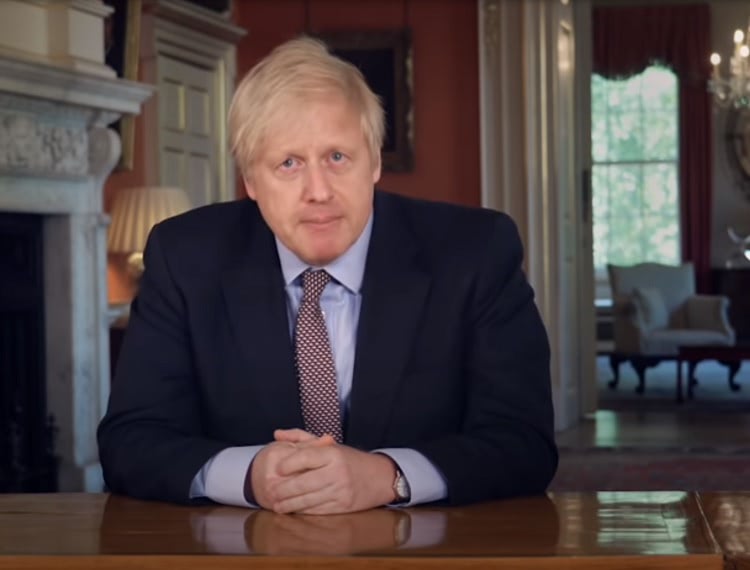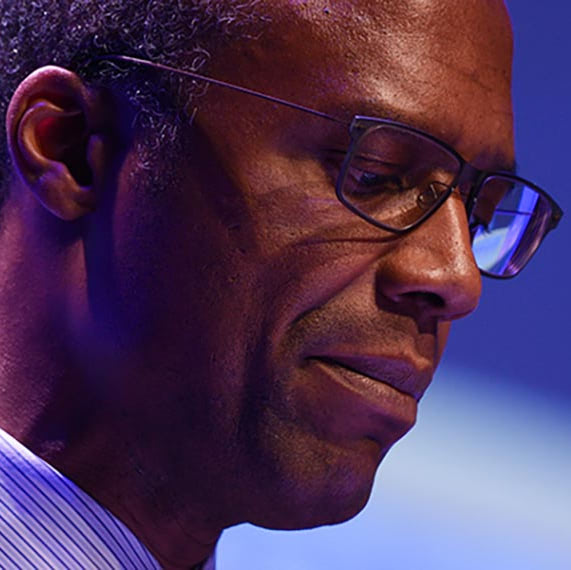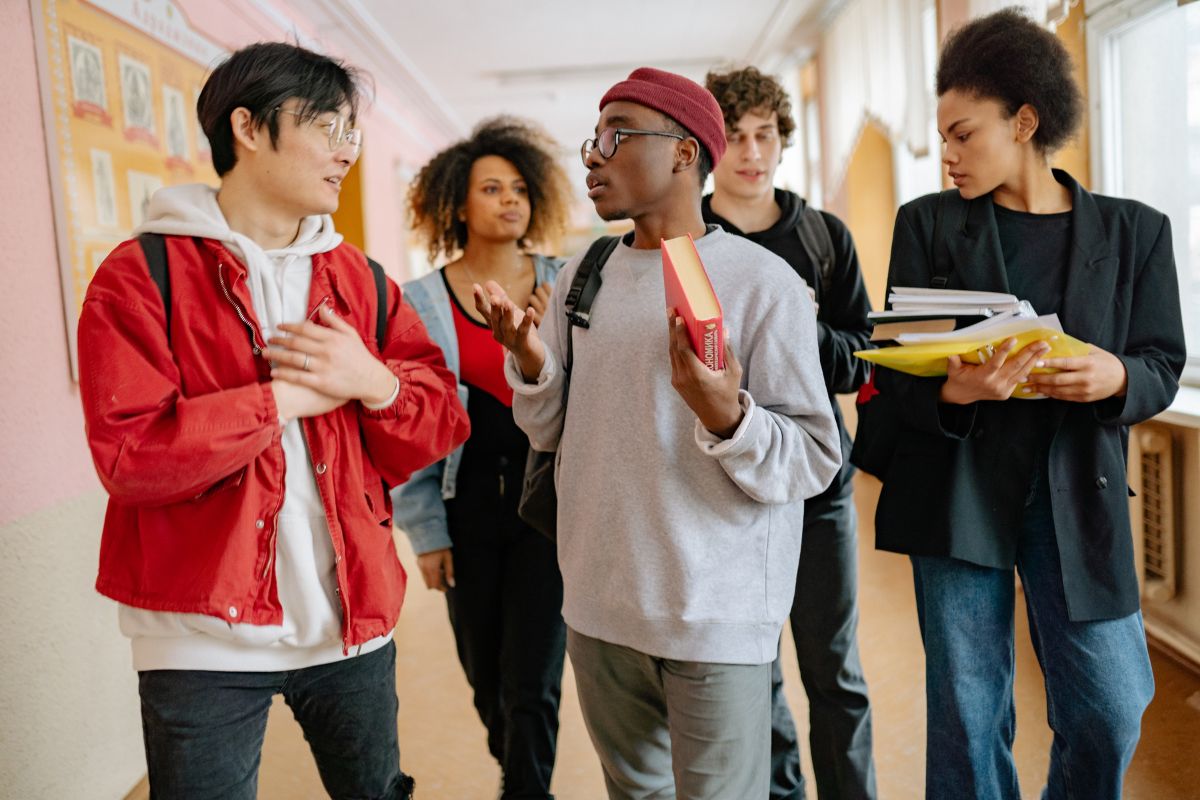New details set out on phased wider opening of colleges, schools and nurseries from 1 June

Numbers to remain limited, with protective measures in place, and phased opening following new plan to conditionally modify some lockdown restrictions.
PM confirms schools, colleges and nurseries on track to begin phased reopening: From 1 June schools, colleges and nurseries are still set to open to more children says @BorisJohnson Schools, colleges and nurseries across England remain on track to open… https://t.co/rbWxaETLcJ pic.twitter.com/wewW3idMcV
— FE News – The #FutureofEducation News Channel (@FENews) May 24, 2020
Plans for schools, colleges and early years settings across England to potentially open to more children and young people have been set out today (11 May).
As the Prime Minister announced yesterday, by 1 June at the earliest primary schools in England may be able to welcome back children in key transition years – nursery, Reception, Year 1 and Year 6.
Secondary schools, sixth forms and colleges will also work towards the possibility of providing some face-to-face contact with young people in Year 10 and Year 12 to help them prepare for exams next year.
However, as the PM has said, progress will be monitored every day. If the virus stays on the downward slope, and the R remains below 1, then – and only then – will it become safe to go further, move to the second step and reopen schools.
Early years settings may also be able to open for all children. The aim is for other primary years to return later in June, but this will be kept under review, and there are currently no plans to reopen secondary schools for other year groups before the summer holidays.
Priority groups, including vulnerable children and children of critical workers who have been eligible to attend throughout school closures, will continue to be able to attend schools, colleges and early years settings as they are currently.
The transmission rate has decreased, and the aim is that by 1 June at the earliest it will be safe for a greater number of children and young people to return to education and childcare.
As a result, the Government is asking schools and childcare providers to plan on this basis, ahead of confirmation of the scientific advice.
This will only happen when the five key tests set by Government justify the changes at the time, including the rate of infection decreasing and the enabling programmes set out in the Roadmap operating effectively.
 Education Secretary Gavin Williamson said:
Education Secretary Gavin Williamson said:
“I know how hard schools, colleges, early years settings and parents are working to make sure children and young people can continue to learn at home, and I cannot thank them enough for that.
“But nothing can replace being in the classroom, which is why I want to get children back to school as soon as it is safe to do so. The latest scientific advice indicates it will be safe for more children to return to school from 1 June, but we will continue to limit the overall numbers in school and introduce protective measures to prevent transmission.
“This marks the first step towards having all young people back where they belong – in nurseries, schools and colleges – but we will continue to be led by the scientific evidence and will only take further steps when the time is right.”
 Dr Mary Bousted, Joint General Secretary of the National Education Union, said:
Dr Mary Bousted, Joint General Secretary of the National Education Union, said:
“The National Education Union want schools to move to a wider opening as soon as it is safe to do so, but it is not safe yet. This timetable is reckless. This timetable is simply not safe. Staff in schools and colleges are asking today for the evidence behind the decision to select some year groups. Education staff do not feel reassured that the Government is taking these steps with public health in mind. Heads have been inundated with questions and queries from their staff and from parents. The Government has stoked teachers’ anxiety and triggered real confusion because the announcement is inconsistent on the importance of social distancing and how or whether it can be achieved in schools.
“This is not fair to anyone and it is not safe to put out a timeline until the public safety test has been met. This first sketch for schools must be immediately re-drawn, alongside unions and the profession.
“The NEU is advising our school leader members today (11 May) that we are in no position to start planning for wider opening yet. This reckless and rushed approach has created a level of uncertainty and stress for school leaders which is simply unmanageable.”

Rebecca Long Bailey MP, Labour’s Shadow Education Secretary, commenting on the Department for Education’s guidance for the reopening of schools, said:
“This guidance raises more questions than it answers leaving headteachers and school leaders unable to adequately plan for the reopening of their schools on this basis.
“There is still no realistic guidance for how social distancing will be kept in place with the age groups that will return first, how staff and families of children will be protected, or how class sizes of fifteen will be achieved with the resources schools have.
“The Government must urgently convene education unions and the profession to create a workable plan for the reopening of schools when the science indicates it is safe to do so and which has the confidence of all those affected.”
Rebecca Long-Bailey MP, continued:
“In the absence of clear scientific advice and a safety plan, the Government has not demonstrated it is in a position to start planning for the wider safe opening of schools, or given any reassurance to parents, teachers and pupils that they will be safe.
“There is no information about how social distancing will work in schools, how teaching and support staff, pupils and parents will be protected from the virus, how small class sizes will be achieved, and no evidence behind the decision to select some year groups over others.
“The Government must urgently convene education unions and the profession more widely and address their concerns, to allay the anxiety and confusion caused by Boris Johnson’s announcement and this guidance.
“By working with the sector the Government can create a workable plan for the reopening of schools when the science indicates it is safe to do so, and which has the confidence of all those affected.”
 Liberal Democrat Education spokesperson Layla Moran said:
Liberal Democrat Education spokesperson Layla Moran said:
“It is irresponsible to release this guidance with so little detail. Parents and teachers are unlikely to find this mixed messaging very reassuring.
“The report calls for local authorities to do more to get vulnerable children into schools but my questions to the Government are, why weren’t they doing this sooner? And what are they going to do differently to before to make sure more vulnerable children go into school? Increased detail, along with the scientific methodology and evidence behind this plan, should be released immediately.
“This Government ‘plan’ will only cause more stress for our already overworked and exhausted teachers. This is why the Government should show leadership and instigate a volunteer force, made up of substitute teachers and retired education professionals, to help our already overworked schools and local authorities identify and reach out to at-risk children and their families.”
Commenting on the government’s Covid-19 recovery strategy UNISON general secretary Dave Prentis said:
“Getting the UK working again, while stopping the spread of the virus, saving lives and keeping us all safe is paramount.
“Clarity, not confusion, is essential if this is to happen. But the danger is that people are now more bewildered than they are reassured. This is made worse because England is now out of step with the rest of the UK.
“The UK has got to get back to work and school, but it must be a safe return for workers and their families. Otherwise all the benefits of the lockdown will be squandered, and a second wave could prove too much for the NHS and other frontline services.
“Many people will now be trying to get their hands on masks to cover their faces on public transport and in supermarkets. The government must ensure surgical standard PPE supplies aren’t disrupted for the NHS and social care. And ministers must put in place a comprehensive test, track and trace strategy at the earliest opportunity.”
Implementing protective measures in education and childcare settings: @EducationGovUK guidance for education and childcare settings on how to implement protective measures As a result of the huge efforts everyone has made to adhere to strict social… https://t.co/C2WYadQbhB pic.twitter.com/8kgjZEA7Xs
— FE News – The #FutureofEducation News Channel (@FENews) May 11, 2020
Guidance to the sector, published today (Monday 11 May), sets out a range of protective measures to ensure education settings remain safe places, including:
- reducing the size of classes and keeping children in small groups without mixing with others
- staggered break and lunch times, as well as drop offs and pick ups
- increasing the frequency of cleaning, reducing the used of shared items and utilising outdoor space
Preparation for the potential reopening of schools will be part of the second phase of modifications to social distancing measures which the Prime Minister set out yesterday – following more people returning to work in step one, and coming alongside the possible reopening of some non-essential retail in phase two.
The Government will continue to work closely with the sector in the build up to and following pupils’ return.
Whilst there will be no penalty for families who do not send their children to school, families will be strongly encouraged to take up these places – unless the child or a family member is shielding or the child is particularly vulnerable due to an underlying condition.
The Scientific Advisory Group for Emergencies advising the Government has a high degree of confidence that the severity of the disease in children is lower than in adults and a moderately high degree of confidence that children aged up to 11 are less susceptible to it.
All staff are already eligible for testing, and staff in shielding and high-risk groups should remain at home.
From 1 June, all children and young people eligible to return to their settings will have access to testing, if they display symptoms, as will any symptomatic member(s) of their household.
This will enable children and staff to get back to school if they test negative, and if they test positive a test and trace approach can be taken. Where a setting has a positive case, Public Health England will advise on the appropriate course of action, and the relevant group of people with whom the individual has mixed closely, should be sent home and advised to self-isolate for 14 days.
- Primary year groups have been prioritised because they are key transition years – children in Reception and Year 1 are at the very beginning of their school career, learning to socialise with their peers and mastering the essential basics, such as counting, reading and writing.
- Year 6 pupils are preparing for the transition to secondary school and will benefit immensely from time with their teachers to ensure they are ready.
- We encourage middle schools to do the same and welcome back children in year 6, to ensure national parity for children in this year group.
- It will also be vitally important for schools and colleges to provide support to pupils in Year 10 and Year 12, ahead of GCSEs and A levels next year.
- Because early childhood is the most significant time for cognitive, social and emotional development, early years settings will be able to reopen to all pre-school children from 1 June. Childminders will also be allowed to look after children of any age, in line with their current Ofsted registration from 1 June.
- We are asking alternative provision settings to welcome back, from 1 June, all children in Reception, year 1 and year 6 and to offer some face-to-face contact for students in year 10 and year 11, as they are approaching key transition points. Children of critical workers and vulnerable children across all year groups remain eligible to attend.
- We are also asking special schools, special post-16 institutions and hospital schools to work towards a phased return of more children and young people without a focus on specific year groups. Settings should work with local authorities and families to continually review risk assessments and to ensure that as many children as can be safely catered for are able to attend their setting.
- Guidance for schools will be published shortly, alongside further information on protective measures, and a Q&A for parents. The Department for Education will publish a framework and toolkit over the coming days to support schools as they plan for pupils and young people to return.
- The Government will continue to provide all settings with the guidance and support they need to prepare over the coming weeks, and work closely with the sector to do so.
- Other secondary school aged pupils and college students should continue to learn at home, with schools and colleges continuing to deliver their own remote education while making use of other high-quality resources, such as Oak National Academy and the BBC, where appropriate.
- The Government is also working with universities to identify guidance and best practice that will be needed to help them make informed decisions on when they can make facilities accessible again for staff and students.
On Sunday 10th May Prime Minister Boris Johnson addressed the nation on new plans to conditionally modify some lockdown restrictions inculding Education and childcare settings to prepare to open for more children from 1 June
 Commenting on the Prime Minister’s announcement on changes to lockdown, Dr Mary Bousted, Joint General Secretary of the National Education Union, said:
Commenting on the Prime Minister’s announcement on changes to lockdown, Dr Mary Bousted, Joint General Secretary of the National Education Union, said:
“We think that the announcement by the Government that schools may reopen from June 1 with reception and years 1 and 6 is nothing short of reckless.
“Coronavirus continues to ravage communities in the UK and the rate of Covid-19 infection is still far too great for the wider opening of our schools.
“A study published last week by the University of East Anglia suggested that school closures are the single most effective way of suppressing the spread of the virus.
“If schools are to re-open, we need the Government to meet the five tests we have set to keep children, their families and our staff safe.
“There must be much lower numbers of Covid-19 cases, with extensive arrangements for testing and contact tracing to keep it that way. This test has manifestly not been met.
“We must have a national plan for social distancing, hygiene, appropriate PPE and regular testing to ensure our schools and colleges don’t become hot spots for Covid-19. This test has manifestly not been met.
“And there must be plans drawn up to protect vulnerable staff, or those who live with vulnerable people, to stop more educators or members of their families dying of this dreadful disease.
“We are supported in this by nearly 400,000 staff and parents who have signed our petition to reopen schools only when it is safe. And Parentkind, one of the largest parents’ groups in the UK, back our tests too.
“We have written three letters to the Government for the science around school reopening, to share the modelling it is using and discuss the concerns raised by our five tests. We have received no reply.
“If schools are re-opened to blatant breaches of health and safety, we will strongly support our members who take steps to protect their pupils, their colleagues and their families. The worst outcome of any wider re-opening of schools is a second spike of Covid-19 infection.
“Our members care deeply about the children they teach – and no-one is more aware of the struggles faced by vulnerable pupils, or those from vulnerable families, than their teachers. If schools cannot safely re-open, we need other ways of supporting those children. For instance, the better weather gives us a chance for some education to take place outdoors, where children are least likely to pick up infection.
“The NEU will survey its members immediately after the Prime Minister has spoken to gauge their reaction to this announcement.
“We urge the Government to follow the example of the Welsh and Scottish governments who have made the decision not to re-open schools at this time.
“Now is the time for Government to listen and do the right thing.”
Within one hour 49,000 members of the National Education Union (NEU) responded to a survey about the Government’s announcement. They have given a resounding NO to the Prime Ministers’s roadmap for wider school reopening.
- 85 per cent of respondents said they disagreed with Boris Johnson’s plans to restart lessons for reception, year 1 and year 6 from 1 June.
- 92 per cent said they would not feel safe with the proposed wider opening of schools.
- Of those with school age children, 89 per cent said they felt it would be unsafe or very unsafe to send their children back to school.
- Of those respondents working from home because they have a pre-existing medical condition or are pregnant, 96 per cent said they felt unsafe or very unsafe returning to work. And 96 per cent of those with a family member living with them who has a pre-existing medical condition or are pregnant thought it would be unsafe or very unsafe for them to return.
- 92% said the Government must meet the NEU’s five tests before schools can re-open.
Dr Mary Bousted, continued:
“The Government must work with the unions to establish a position which gains the confidence of staff in schools. [This] announcement – so out of step with Scotland and Wales and with its confusion about social distancing – has resulted in 92 per cent of NEU members saying they currently feel a wider opening of schools would be unsafe
“The Prime Minister describes this as a ”first sketch” of a roadmap but our members think this sketch must urgently be re-drawn.
“The incoherence in this plan has generated genuine fear. For school leaders, the lack of clarity about what is expected before, or on 1 June, is simply unacceptable.”
 Dr Patrick Roach, General Secretary of the NASUWT – The Teachers’ Union, said:
Dr Patrick Roach, General Secretary of the NASUWT – The Teachers’ Union, said:
“The Prime Minister’s statement that it would be “madness” to risk a second spike in transmission of the Coronavirus highlights the need for extreme caution.
“Regrettably, the Prime Minister’s announcement is likely to provoke confusion and does not address the genuine concerns that have been raised by teachers.
“The Prime Minister’s announcement lacks the clarity of statements issued by Ministers in Scotland and Wales who have reaffirmed the key ‘stay at home’ message.
“The Government’s announcement that schools in England might reopen to more children from 1 June risks thousands of schools rushing to make decisions about how best to safeguard the health and safety of children and staff in the absence of any clear national guidance.
“It is baffling that following the Government’s decision to close all schools on public health grounds that the Government now expects individual schools to work out for themselves whether or not it will be safe to reopen on 1 June and potentially put at risk the health of children, staff and the public.
“With no date yet set for when the Government’s guidance will be forthcoming, school leaders in England are being placed in an extremely difficult position of being asked to draw up plans affecting lives of children and their teachers.
“Today’s announcements will do little to assuage teachers’ concerns about the premature reopening of schools.
“The Government must with the utmost urgency address teachers’ concerns or expect to lose the goodwill of the profession.
“Unless and until the Government can demonstrate that schools will be safe for staff and children, all schools should continue to limit their opening only to vulnerable children and to children of key workers.
“The NASUWT will continue to press the Government on the need for clear guidance and stringent and enforceable health and safety risk assessment measures to be in place in every school prior to relaxing the current restrictions.
“The UK Government’s message to be responsible and to ‘stay alert’ will ring hollow with teachers who are still being denied access to appropriate PPE and who have been given no clear guidance about how social distancing can be practiced in school settings.
“Notwithstanding the Government’s five tests, the bottom line is that no teacher or child should be expected to go into schools until it can be demonstrated that it is safe for them to do so.”
 Responding to the Prime Minister’s COVID-19 update, Liberal Democrat Education spokesperson Layla Moran said:
Responding to the Prime Minister’s COVID-19 update, Liberal Democrat Education spokesperson Layla Moran said:
“The Prime Minister’s announcement raises more questions than it answers on reopening schools, like how will social distancing be maintained with the youngest pupils? It’s nonsensical. This can’t be a top-down affair — politicians need to consult with those who actually run our schools. Where is the Education Secretary in all this? He needs to come to the Commons as soon as possible to answer MPs’ questions.
“Government needs to work with school leaders to understand what they need, and put provisions for each school in place now. Only when school staff have the PPE they need, as per their own risk assessment, should reopening be happening.
“We are still waiting on the Government to publish its full plan for reopening schools. School leaders, teachers and others need to see these plans so they can assess the risks and take the action they need to take. We also need to see the scientific advice this is based on. It has to be safety first.”
 Rebecca Long-Bailey MP, Labour’s Shadow Education Secretary, said:
Rebecca Long-Bailey MP, Labour’s Shadow Education Secretary, said:
“The primary consideration before opening schools has to be the safety of pupils, their families and staff.
“Schools should not open until it is safe to do so and the government must commit to work with trade unions and others to agree a set of principles and tests to put safety systems in place in advance of any planned reopening.
“The government must take heed of the tests set out today by trade unions and commit to not opening schools unless they have been met.”
Responding to Prime Minister Boris Johnson’s address on the road map for reopening society, Cllr James Jamieson, Chairman of the Local Government Association, said:
“It is encouraging that we are now moving into the next phase of tackling this virus and we look forward to seeing more details on the Government’s plan.
“During this pandemic, councils’ role as leaders of place has been more important than ever before. They will continue to lead their communities through this crisis as we adapt to this new way of life, working day and night to protect the most vulnerable, help local businesses, keep important services running and support national efforts to defeat this disease.
“The scale of the economic, environmental and community challenges that we will face cannot be under-estimated. Communities will need to keep sticking together through this crisis and follow the Government’s plan and social distancing rules to ensure people are not put at risk unnecessarily.”
Prime Minister Boris Johnson addressed the nation on coronavirus:
“It is now almost two months since the people of this country began to put up with restrictions on their freedom – your freedom – of a kind that we have never seen before in peace or war.
“And you have shown the good sense to support those rules overwhelmingly.
“You have put up with all the hardships of that programme of social distancing.
“Because you understand that as things stand, and as the experience of every other country has shown, it’s the only way to defeat the coronavirus – the most vicious threat this country has faced in my lifetime.
“And though the death toll has been tragic, and the suffering immense.
“And though we grieve for all those we have lost.
“It is a fact that by adopting those measures we prevented this country from being engulfed by what could have been a catastrophe in which the reasonable worst case scenario was half a million fatalities.
“And it is thanks to your effort and sacrifice in stopping the spread of this disease that the death rate is coming down and hospital admissions are coming down.
“And thanks to you we have protected our NHS and saved many thousands of lives.
“And so I know – you know – that it would be madness now to throw away that achievement by allowing a second spike.
“We must stay alert.
“We must continue to control the virus and save lives.
“And yet we must also recognise that this campaign against the virus has come at colossal cost to our way of life.
“We can see it all around us in the shuttered shops and abandoned businesses and darkened pubs and restaurants.
“And there are millions of people who are both fearful of this terrible disease, and at the same time also fearful of what this long period of enforced inactivity will do to their livelihoods and their mental and physical wellbeing.
“To their futures and the futures of their children.
“So I want to provide tonight – for you – the shape of a plan to address both fears.
“Both to beat the virus and provide the first sketch of a road map for reopening society.
“A sense of the way ahead, and when and how and on what basis we will take the decisions to proceed.
“I will be setting out more details in Parliament tomorrow and taking questions from the public in the evening.
“I have consulted across the political spectrum, across all four nations of the UK.
“And though different parts of the country are experiencing the pandemic at different rates.
“And though it is right to be flexible in our response.
“I believe that as Prime Minister of the United Kingdom – Scotland, England, Wales, Northern Ireland, there is a strong resolve to defeat this together.
“And today a general consensus on what we could do.
“And I stress could.
“Because although we have a plan, it is a conditional plan.
“And since our priority is to protect the public and save lives, we cannot move forward unless we satisfy the five tests.
“We must protect our NHS.
“We must see sustained falls in the death rate.
“We must see sustained and considerable falls in the rate of infection.
“We must sort out our challenges in getting enough PPE to the people who need it, and yes, it is a global problem but we must fix it.
“And last, we must make sure that any measures we take do not force the reproduction rate of the disease – the R – back up over one, so that we have the kind of exponential growth we were facing a few weeks ago.
“And to chart our progress and to avoid going back to square one, we are establishing a new Covid Alert System run by a new Joint Biosecurity Centre.
“And that Covid Alert Level will be determined primarily by R and the number of coronavirus cases.
“And in turn that Covid Alert Level will tell us how tough we have to be in our social distancing measures – the lower the level the fewer the measures.
“The higher the level, the tougher and stricter we will have to be.
There will be five alert levels
“Level One means the disease is no longer present in the UK and Level Five is the most critical – the kind of situation we could have had if the NHS had been overwhelmed.
“Over the period of the lockdown we have been in Level Four, and it is thanks to your sacrifice we are now in a position to begin to move in steps to Level Three.
“And as we go everyone will have a role to play in keeping the R down.
“By staying alert and following the rules.
“And to keep pushing the number of infections down there are two more things we must do.
“We must reverse rapidly the awful epidemics in care homes and in the NHS, and though the numbers are coming down sharply now, there is plainly much more to be done.
“And if we are to control this virus, then we must have a world-beating system for testing potential victims, and for tracing their contacts.
“So that – all told – we are testing literally hundreds of thousands of people every day.
“We have made fast progress on testing – but there is so much more to do now, and we can.
“When this began, we hadn’t seen this disease before, and we didn’t fully understand its effects.
“With every day we are getting more and more data.
“We are shining the light of science on this invisible killer, and we will pick it up where it strikes.
“Because our new system will be able in time to detect local flare-ups – in your area – as well as giving us a national picture.
“And yet when I look at where we are tonight, we have the R below one, between 0.5 and 0.9 – but potentially only just below one.
“And though we have made progress in satisfying at least some of the conditions I have given.
“We have by no means fulfilled all of them.
“And so no, this is not the time simply to end the lockdown this week.
“Instead we are taking the first careful steps to modify our measures.
“And the first step is a change of emphasis that we hope that people will act on this week.
“We said that you should work from home if you can, and only go to work if you must.
“We now need to stress that anyone who can’t work from home, for instance those in construction or manufacturing, should be actively encouraged to go to work.
“And we want it to be safe for you to get to work. So you should avoid public transport if at all possible – because we must and will maintain social distancing, and capacity will therefore be limited.
“So work from home if you can, but you should go to work if you can’t work from home.
“And to ensure you are safe at work we have been working to establish new guidance for employers to make workplaces COVID-secure.
“And when you do go to work, if possible do so by car or even better by walking or bicycle. But just as with workplaces, public transport operators will also be following COVID-secure standards.
“And from this Wednesday, we want to encourage people to take more and even unlimited amounts of outdoor exercise.
“You can sit in the sun in your local park, you can drive to other destinations, you can even play sports but only with members of your own household.
“You must obey the rules on social distancing and to enforce those rules we will increase the fines for the small minority who break them.
“And so every day, with ever increasing data, we will be monitoring the R and the number of new infections, and the progress we are making, and if we as a nation begin to fulfil the conditions I have set out, then in the next few weeks and months we may be able to go further.
“In step two – at the earliest by June 1 – after half term – we believe we may be in a position to begin the phased reopening of shops and to get primary pupils back into schools, in stages, beginning with reception, Year 1 and Year 6.
Our ambition is that secondary pupils facing exams next year will get at least some time with their teachers before the holidays. And we will shortly be setting out detailed guidance on how to make it work in schools and shops and on transport.
“And step three – at the earliest by July – and subject to all these conditions and further scientific advice; if and only if the numbers support it, we will hope to re-open at least some of the hospitality industry and other public places, provided they are safe and enforce social distancing.
“Throughout this period of the next two months we will be driven not by mere hope or economic necessity.We are going to be driven by the science, the data and public health.
“And I must stress again that all of this is conditional, it all depends on a series of big Ifs.It depends on all of us – the entire country – to follow the advice, to observe social distancing, and to keep that R down.
“And to prevent re-infection from abroad, I am serving notice that it will soon be the time – with transmission significantly lower – to impose quarantine on people coming into this country by air.
“And it is because of your efforts to get the R down and the number of infections down here, that this measure will now be effective.
“And of course we will be monitoring our progress locally, regionally, and nationally and if there are outbreaks, if there are problems, we will not hesitate to put on the brakes.
“We have been through the initial peak – but it is coming down the mountain that is often more dangerous.
“We have a route, and we have a plan, and everyone in government has the all-consuming pressure and challenge to save lives, restore livelihoods and gradually restore the freedoms that we need.
“But in the end this is a plan that everyone must make work.
“And when I look at what you have done already.
“The patience and common sense you have shown.
“The fortitude of the elderly whose isolation we all want to end as fast as we can.
“The incredible bravery and hard work of our NHS staff, our care workers.
“The devotion and self-sacrifice of all those in every walk of life who are helping us to beat this disease.
“Police, bus drivers, train drivers, pharmacists, supermarket workers, road hauliers, bin collectors, cleaners, security guards, postal workers, our teachers and a thousand more.
“The scientists who are working round the clock to find a vaccine.
“When I think of the millions of everyday acts of kindness and thoughtfulness that are being performed across this country.
“And that have helped to get us through this first phase.
“I know that we can use this plan to get us through the next.
“And if we can’t do it by those dates, and if the alert level won’t allow it, we will simply wait and go on until we have got it right.
“We will come back from this devilish illness.
“We will come back to health, and robust health.
“And though the UK will be changed by this experience, I believe we can be stronger and better than ever before.More resilient, more innovative, more economically dynamic, but also more generous and more sharing.
“But for now we must stay alert, control the virus and save lives.
“Thank you very much.”
Coronavirus, Pupils and Schools: Unanswered Questions
On the National Education Union is publishing a report re-stating the questions it has asked Government about the impact on children, families, staff and the wider community of proposals to re-open schools more widely.
It is called Coronavirus, pupils and schools: Unanswered Questions.
 Kevin Courtney, Joint General Secretary of the National Education Union, said;
Kevin Courtney, Joint General Secretary of the National Education Union, said;
“Over the last six weeks, we have written three times to the Prime Minister and the Secretary of State for Education outlining concerns that our members and parents and carers of children in our schools have raised about the crisis.
“We have asked the Government to share with us its evidence and modelling. We have asked for the publication of peer-reviewed science. So far, we have received no response.
“This is not acceptable. These questions must be addressed before any wider opening of schools is proposed or no educator or parent can have confidence in such proposals.”
NEU petition is here: https://actionnetwork.org/forms/open-schools-when-it-is-safe
NEU wrote a joint letter with Parentkind to Gavin Wiliiamson last week.












Responses